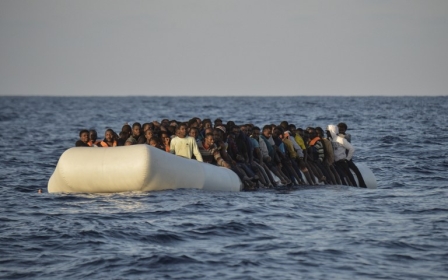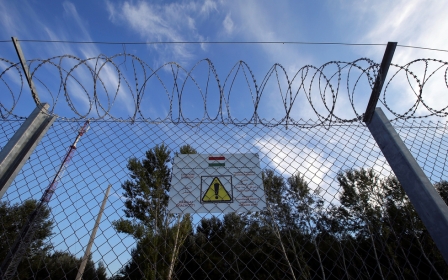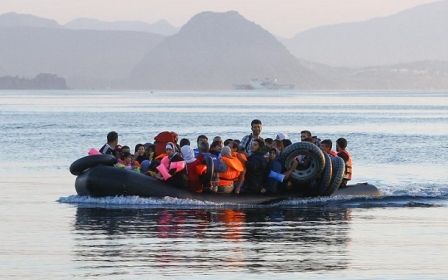Migrants in 'dangerous' Mediterranean easier to police, says Hungarian minister

Budapest, Hungary - Hungary's international affairs minister has defended his country's border control against refugees and migrants, saying the Mediterranean is easier to police than land borders because it is so dangerous.
Matyas Hegyaljai was speaking in Budapest on Tuesday at a forum organised by Borderpol, an international border agency forum sponsored by private security companies.
"Some people say it is more difficult to protect sea borders. But [protecting land borders] is so complicated," Hegyaljai said.
"If you close a land border, the people can wait any time, anywhere, to find alternative routes. It's not dangerous.
"But when they are just moving through the sea, they choose one or two directions, and they cannot stop.
"Authorities using new technologies like detectors and radars can find the routes very precisely. They can find the migrants and the criminals who try to help them."
Deadliest year in Mediterranean
His comments came towards the end of what is already by far the deadliest year on record for people crossing the Mediterranean.
As of Monday, a total of 4,715 people have died trying to reach Europe by sea.
Each person crossing the Mediterranean this year, mostly setting off from Libya, has had a one-in-74 chance of dying on the journey.
Later, Hegyaljai - who also serves on the executive committee of the international police agency, Interpol - defended the various border fences Hungary built last year, saying he had been "asked to protect the external European border" during that year's unprecedented surge in border crossings and asylum applications.
"Protect the border without building a fence - how could we do that?
"This is a way to protect the border between an EU and a non-EU country," he said, referring to Hungary's 106 million euro barrier on its border with Serbia.
"We have never established border protection between two countries that are in the EU and Schengen," he added. In 2015, Hungary also erected a barrier on its border with Croatia, which is in the EU but not the Schengen visa-free travel zone.
"EU freedom of movement is a great success," he said.
Hungary border wall 'temporary'
Hungary's border police chief, speaking at the same conference, said on Wednesday that Hungary could consider taking down the wall in the future.
"We are not proud of our fence. But we had no other way of stopping illegal migration," Colonel Laszlo Balazs said.
"The fence is only a temporary obstacle - we will see what will happen in the near future."
Hegyaljai, despite defending the border fences, admitted that his department of the interior ministry "doesn't know how to manage [border protection] in the right way".
He also suggested that a large proportion of the 1.8 million people who entered the EU as asylum seekers last year could be hiding their true identities to cover up a criminal background.
"We think that these people are from Syria or wherever," he said.
"We know their personal or criminal background only from the point of registration. But we don't know anything about their real background.
"These 1.8 million people [now] in the EU, we don't know who they really are - we know who they are from 2015, and that's all."
Doctors Without Borders (MSF), whose search and rescue ships have saved thousands of people from drowning in the Mediterranean, and which also operates in Serbia, said Hungary's border policies were part of a flawed system that encourages risky border crossings.
Its head of mission in Serbia, Stephane Moissaing, said: “Walls and fences don't stop people from crossing. They only push already vulnerable people to use more dangerous routes and expose them to violence by smugglers and border police - as we see every day in our projects in Serbia.”
Middle East Eye propose une couverture et une analyse indépendantes et incomparables du Moyen-Orient, de l’Afrique du Nord et d’autres régions du monde. Pour en savoir plus sur la reprise de ce contenu et les frais qui s’appliquent, veuillez remplir ce formulaire [en anglais]. Pour en savoir plus sur MEE, cliquez ici [en anglais].




